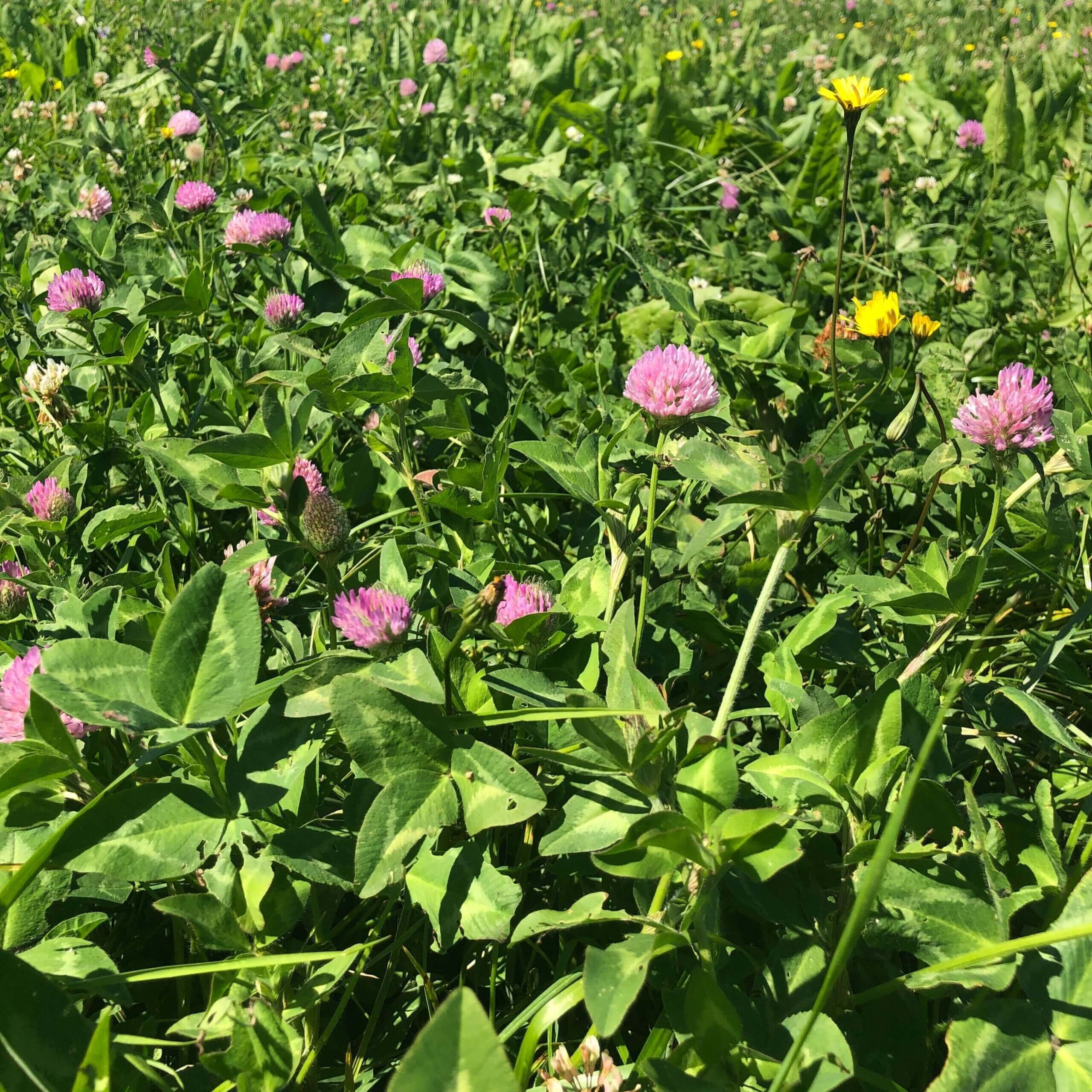Enhance soil quality by improvements in soil fertility, physical soil attributes and paddock ecosystem with summer legume forage crops.
Summer legume forage & cover crops are an excellent way to improve soil nitrogen levels by significant fixation or by incorporating green manure crops into the soil in southern parts of Australia. Nitrogen fixation is the summer legumes ability to extract nitrogen from the air and convert it to a form plants usually obtain from the soil - and then using it for positive plant growth.
Legumes are also excellent companions to summer grasses in forage & cover crops. We can custom blend many different legumes and companion species.
Late spring and summer rainfall patterns have a significant impact on which legumes can be used for summer sowing. Pasture legumes need high constant levels of soil moisture for germination and early development so please always seek advice from our team on the best legume to use.
Legumes include:
- Red clover
- Lab-Lab
- Cowpeas
- Tropical legumes
Summer legume forage crops:
- Providing high quality feed for livestock
- Nitrogen fixing for non-leguminous species.
- Increase pasture quality with legume blend
Summer legume cover crops:
- Increase organic matter in the soil
- Capture and recycle nutrients from previous crop
- Ease of establishment
- Increase the nitrogen and moisture retention of the soil
- Aggressive growth nature can protect soils from erosion
- Suppressing weeds without the use of herbicides
Red Clover
Red clover is a large leafed, semi erect summer active companion legume that is highly palatable with good livestock acceptance.
Sown in spring whilst good soil moisture available varieties such as Reaper Red Clover & Amigain Red Clover are a very palatable varieties with fine stems (less stalky than traditional red clovers) and are low in oestrogen levels.
In temperate areas and in grazing scenarios it is ideally mixed at 3-6kg/ha with the likes of forage millet, sorghum, chicory and plantain. Red clover is best on free draining soils under moderate stocking rates, long summer grazing rotations or hay production.

Ready to find out more?
Drop us a line today for more agronomy information
Cowpeas
In subtropical and tropical areas, Cowpeas are ideal legume companion species with forage sorghum and millet to add nutrient value for a more balanced feed ration animal production.
Cowpeas are fast growing multi purpose legumes with spreading to fairly erect growth habits, growing up to 50-100cm high. Cowpeas are safe grazing, low bloat risk and nil prussic acid and farmers can safely graze stressed cowpea crops. The ideal time to cut a cowpea is about 70-90 days after sowing. Cowpeas are adapted to a wide range of soil types, with a preference of heavier soils and are sown at 20-25kg/ha as a standalone and 8-12kg/ha in a mix.
Lab-Lab
More tolerant to heavy grazing then cowpeas, Lab-Lab is typically sown for grazing, forage conservation and as a break crop in sub-tropical and tropical farming systems.
Lab-lab is characterised by being easy to establish with thick, twining stems and large leaves. Lab Lab is short lived, however provides bulk dry matter over the warmer months. If grazing Lab Lab it should occur prior to flowering to maintain the maximum forage quality.
Tropical legumes
Our range of sub tropical and tropical legumes are suitable for a variety of soil textures in medium to high summer dominant rainfall zones. Our range includes Aztec Atro siratro, Caatinga stylo, Cardillo centro and V8 stylo.






